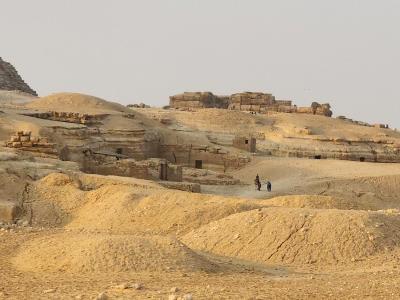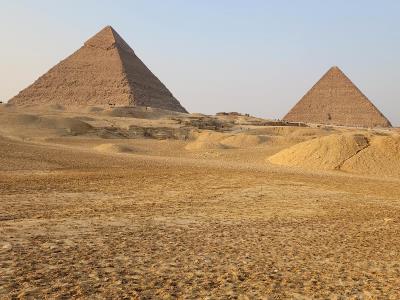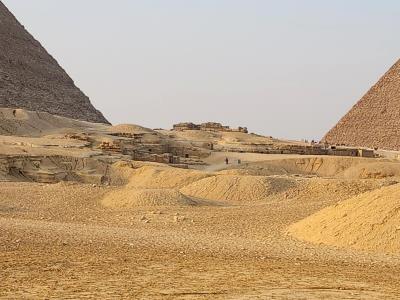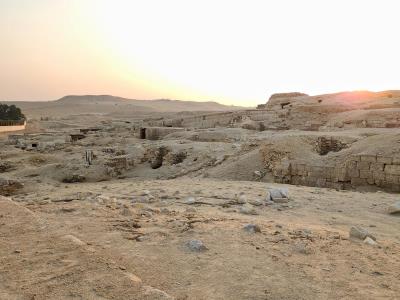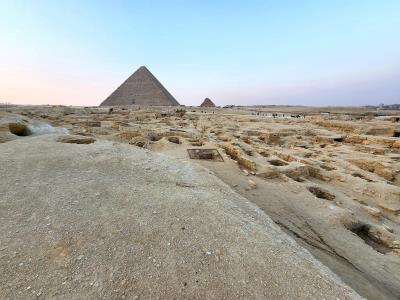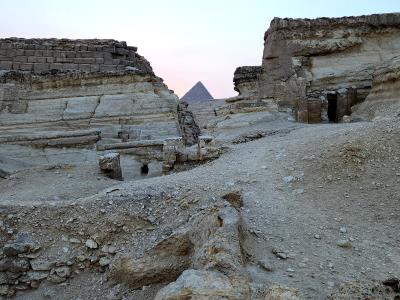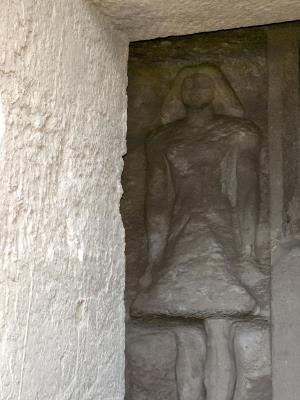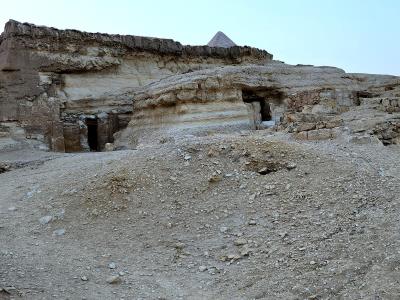Day 4 11/5/22
Egypt - Giza
Frank's Trip
CLICK on any image to enlarge - use mouse cursor to move enlargement it if doesn't fit area
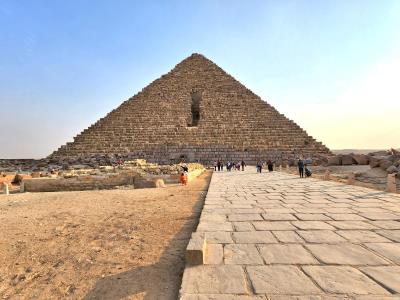
 Giza Pyramids ...
Giza Pyramids ...
The Giza plateau, a "suburb" of Cairo, is the home to the pyramids of this area. There are 3 primary pyramids: the Great Pyramid of Khufu - the Pyramid of Khafre - the Pyramid of Menkaure along with the 3 small Pyramids of the Queens located by it. Information about each of these is in sidebars on this page.
A monopoly controls the horse, camel, and horse cart business - so they are pricey. However, compared to the alternative of walking - well worthwhile for a tired old dude! The guides that operate the horse carts speak English reasonably well - presumably some for other languages, too. They never stop talking and are all about taking your picture. They are the best choice, though, for getting around the plateau and seeing all the pyramids in a reasonable time. And if there are too many people somewhere (such as on a platform to photo the Sphinx) these guides are good at getting their charges through the throng and a faster passage by the guards.
Great Pyramid of Khufu The Great Pyramid, the largest of the three main pyramids at Giza, was built by Khufu and rises to a height of 146 meters (481 feet). Humans constructed nothing taller than the Great Pyramid until 1221 A.D., when the steeple of Old St. Paul’s Cathedral was built in London and, at 149 meters (489 feet), surpassed it—at least until the steeple collapsed less than 350 years later. It’s not just the height that is impressive, but also the precision with which the Great Pyramid was designed and executed. With a base length of more than 230 meters (750 feet) per side, the greatest difference in length among the four sides of the pyramid is a mere 4.4 cm (1 ¾ inches) and the base is level within 2.1 cm (less than an inch). This is an astonishing accomplishment that would be a challenge to replicate today even with modern equipment. |
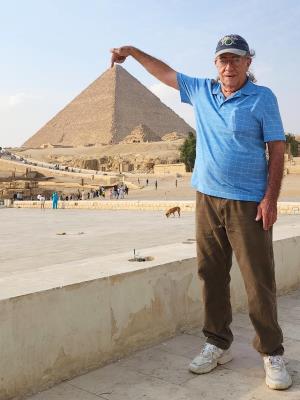
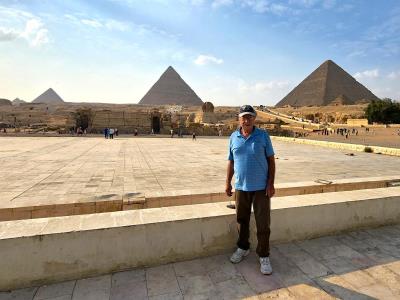
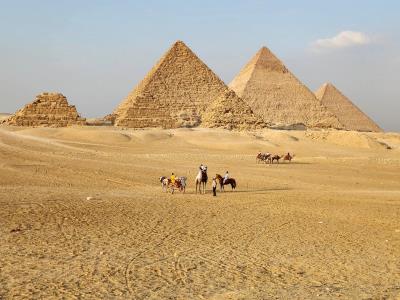
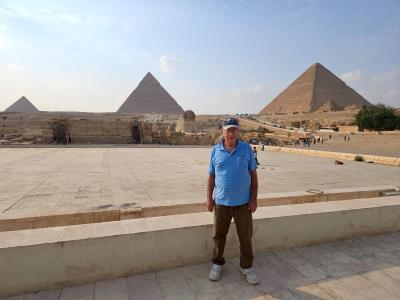
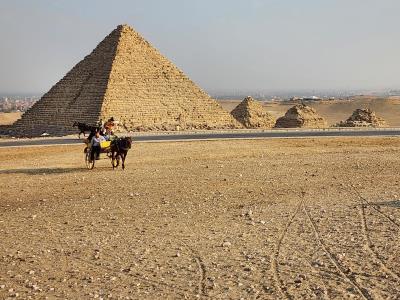
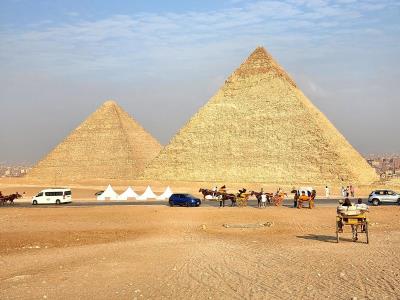
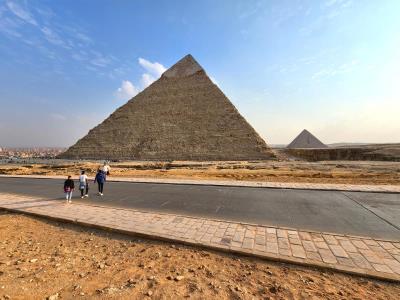
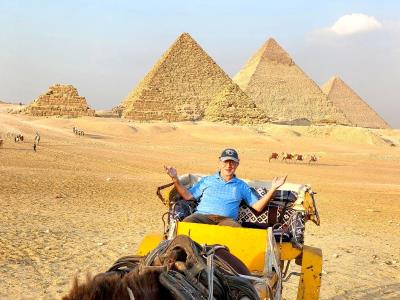
Pyramid of Khafre The second great pyramid of Giza was built by Khufu’s second son Khafre. At the very top, a section of outer casing stones like those that would have originally covered all three of the Great Pyramids still survives. Although this monument appears larger than that of his father, it is actually slightly smaller but was constructed 10 meters (33 feet) higher on the plateau. |
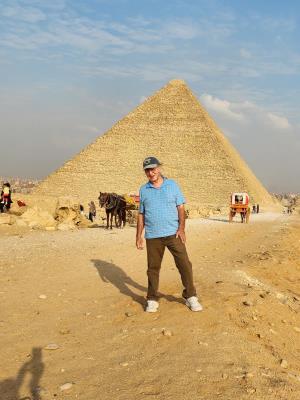
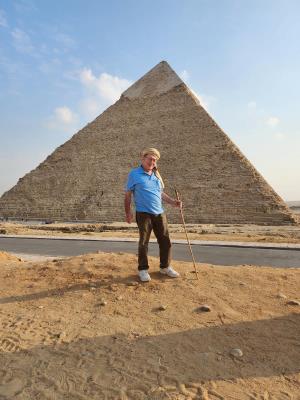
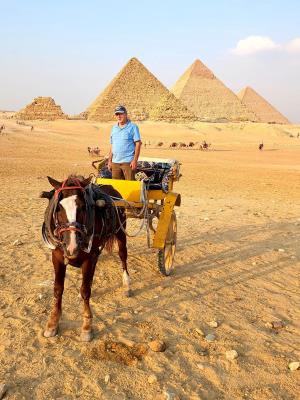
Pyramid of Menkaure The third of the major pyramids at Giza belongs to Menkaure. This is the smallest of the three, rising to a height of 65 meters (213 feet), but the complex preserved some of the most stunning examples of sculpture to survive from all of Egyptian history. |
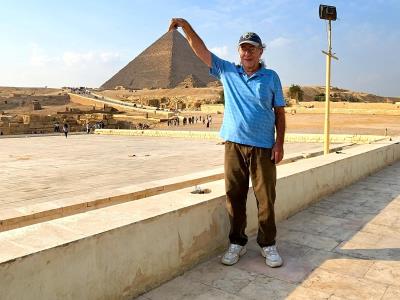
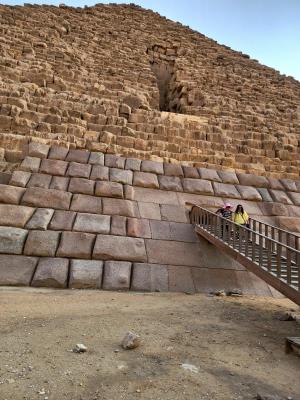
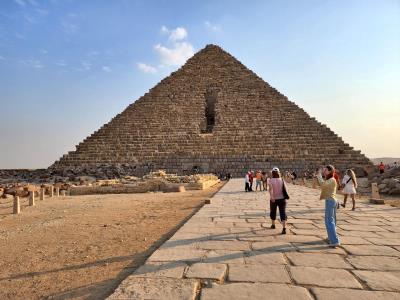
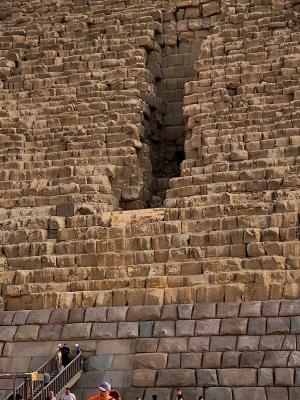
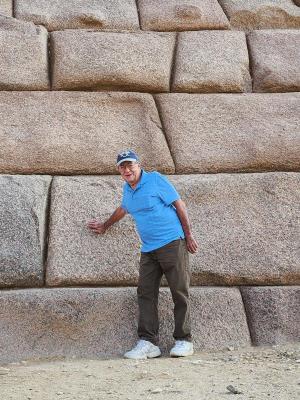
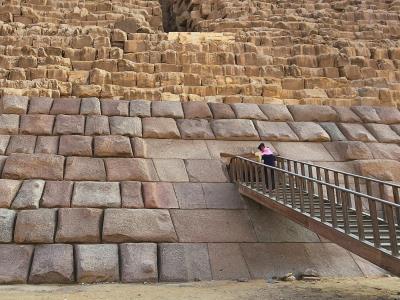
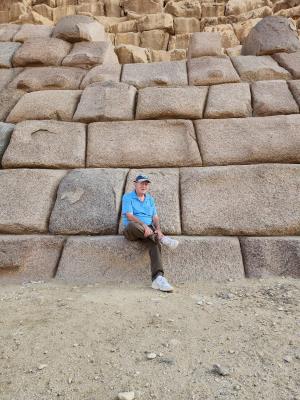

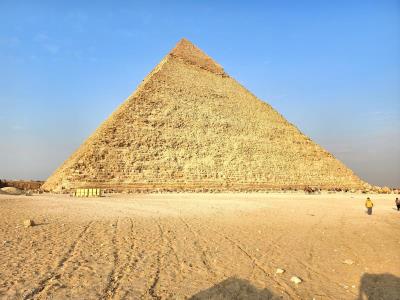
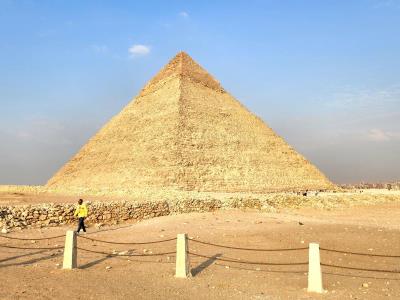
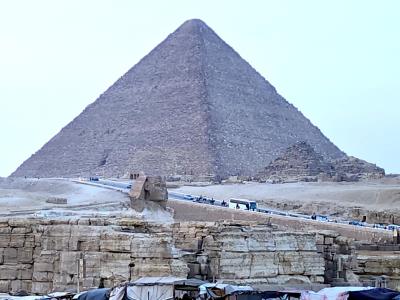
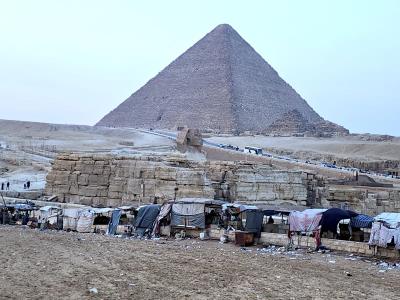
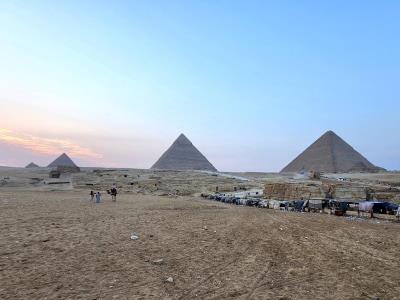
The Queens' Pyramids
There are three satellite pyramids on the north side of the Great Pyramid of Giza, which are often referred to as the Queens' Pyramids.
Queen Hetepheres - Queen Meritites - Queen Henutsen
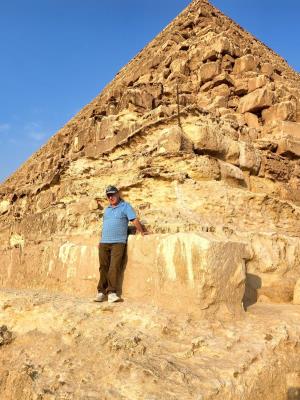
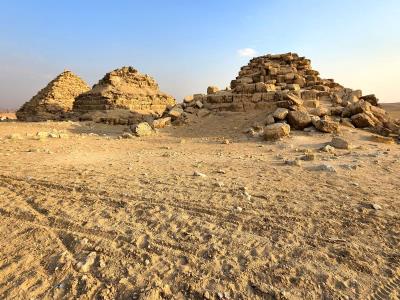
The Great Sphinx
Right next to the causeway leading from Khafre’s valley temple to the mortuary temple sits the first truly colossal sculpture in Egyptian history: the Great Sphinx. This close physical association (along with other evidence) indicates that this massive depiction of a recumbent lion with the head of a king was carved for Khafre. The Sphinx is carved from the bedrock of the Giza plateau.
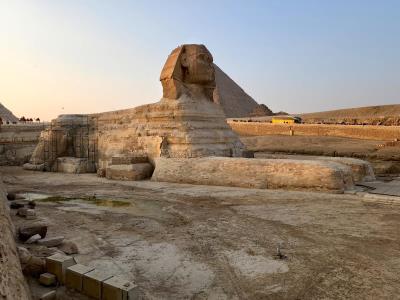
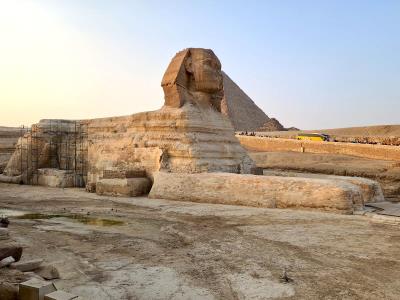
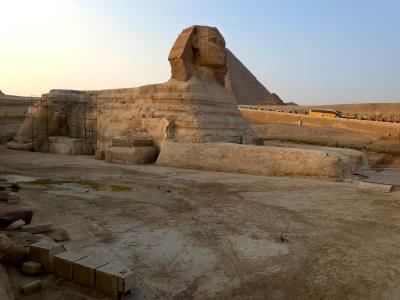
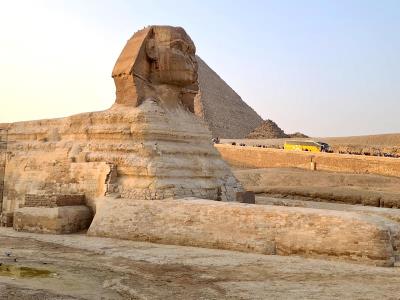
Ancient Tombs of more common people
Through this hillside near a couple of the pyramids are scattered hundreds of ancient tiny tombs - literally fairly small holes carved into the rock hillside. These are tombs of people who were far more common than those able to afford greater places to be buried - but still somewhat elite as compared with the everyday person. There are many defaced statuettes and carvings and, of course, there is nothing of value left here.
